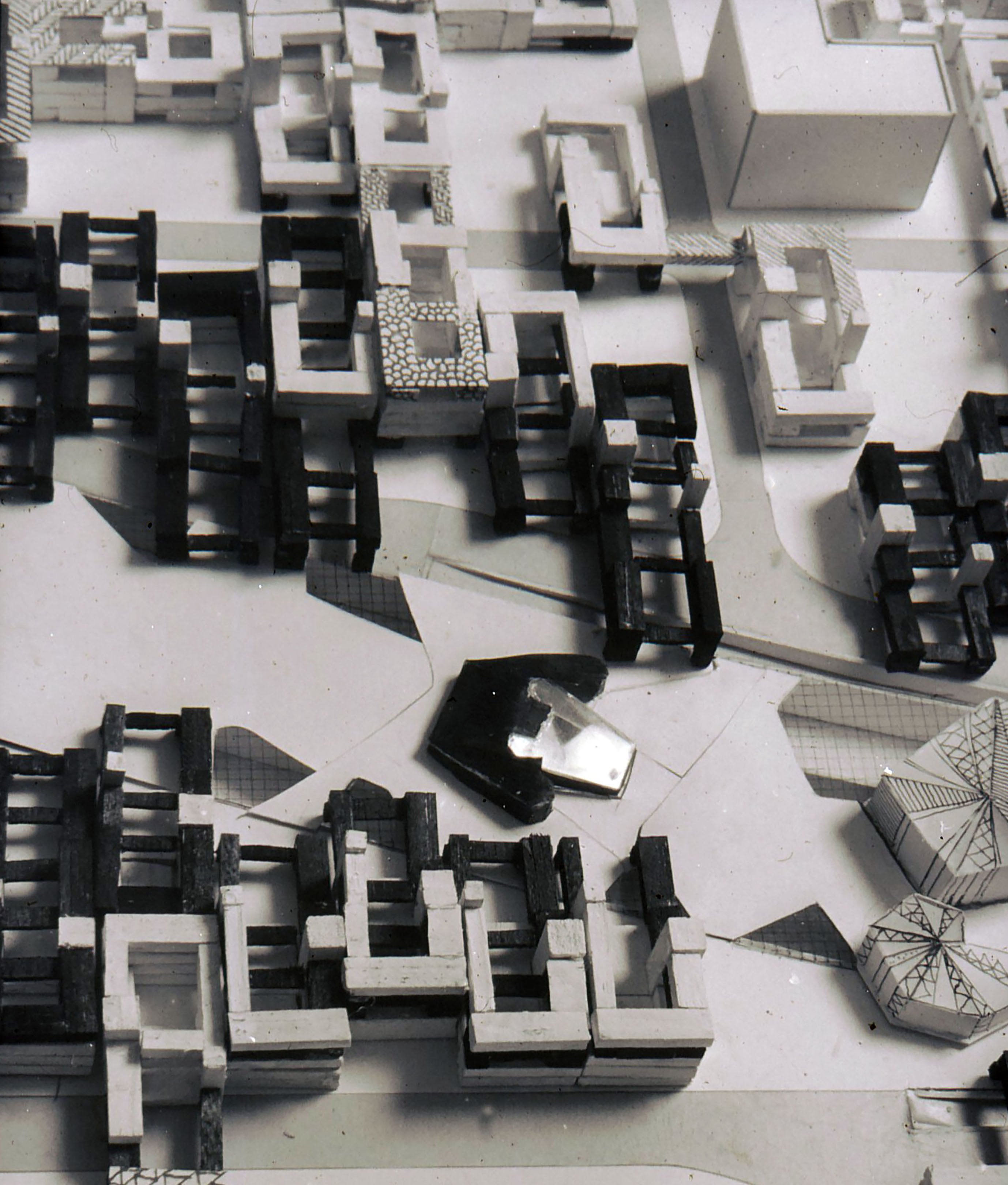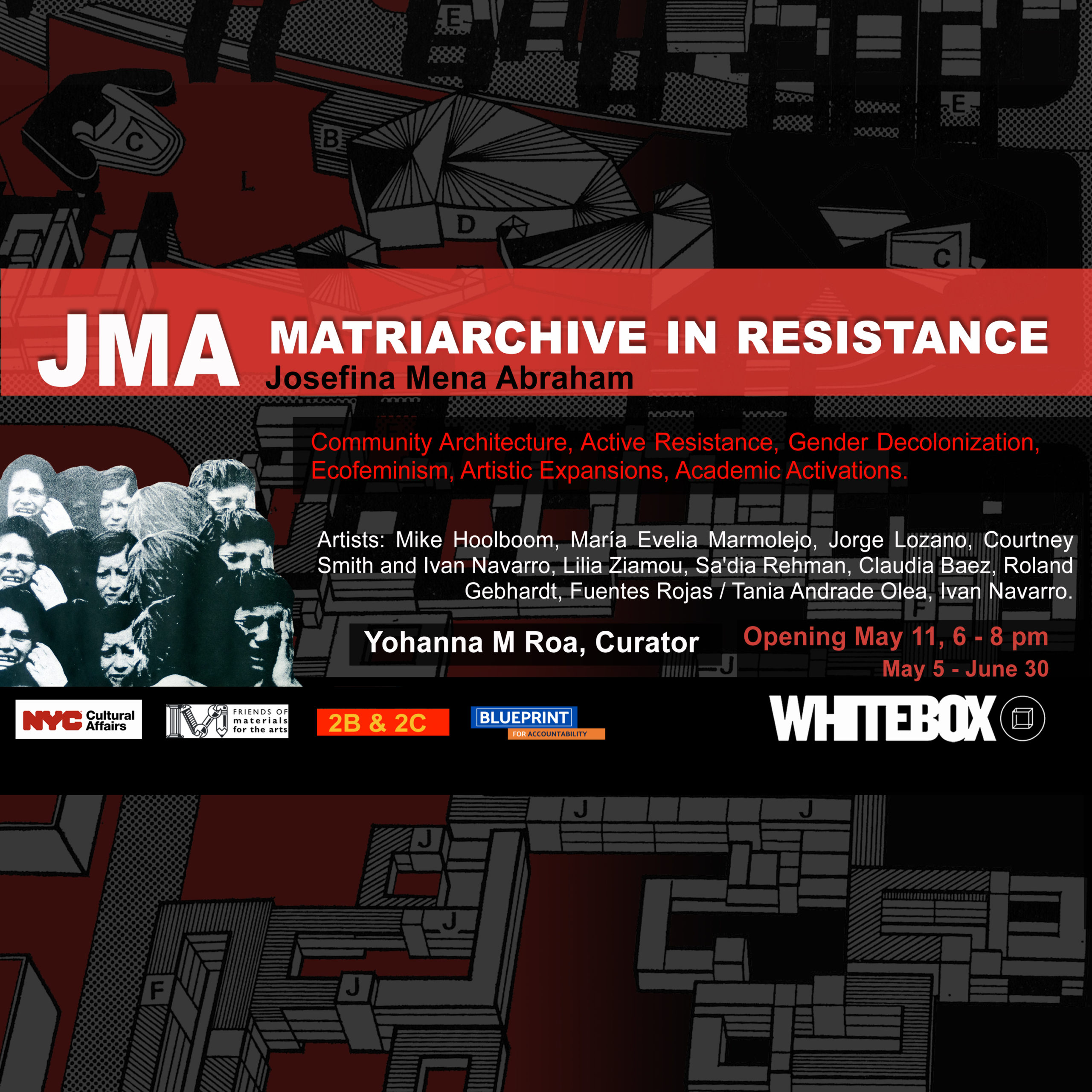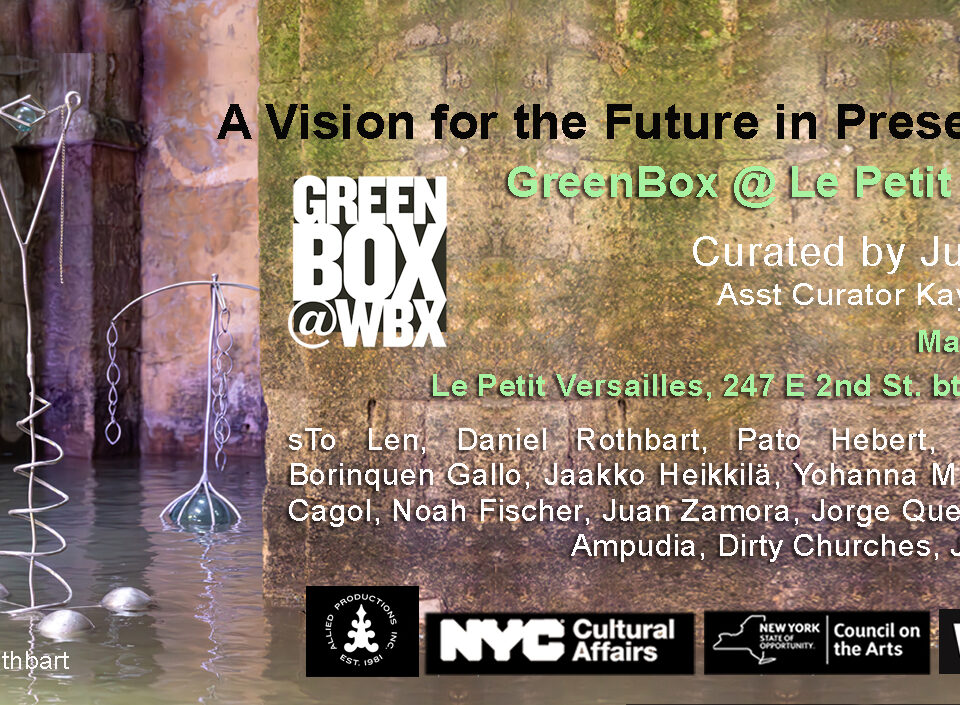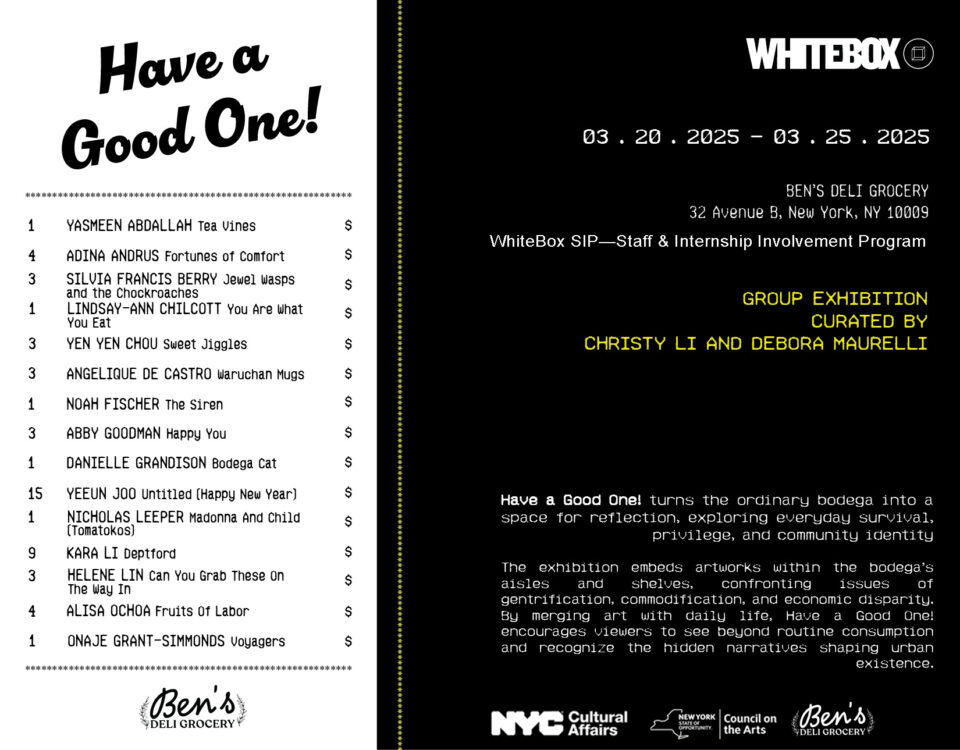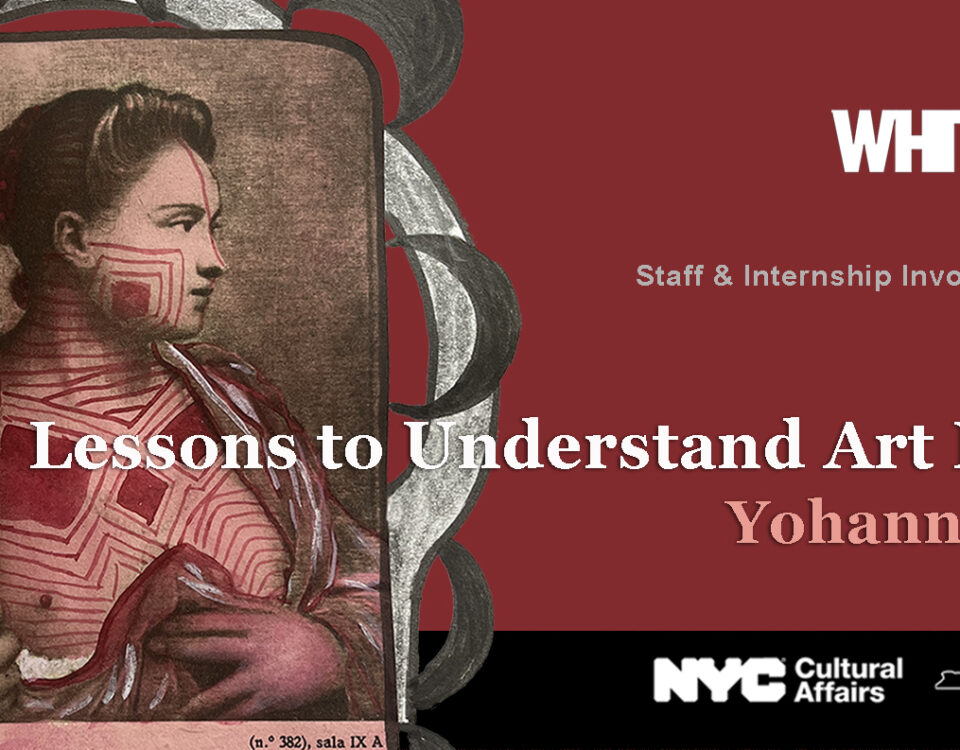
EXODUS VIII: Off the Cloth
March 23, 2022
“The Front Window” Open Call
June 15, 2022May 5- June 30, 2022
Opening May 11, 6-9 PM
A Curatorial Project by Yohanna M. Roa
WhiteBox is proud to present in its new East Village quarters Matriarchive In Resistance, a transcendent exhibition curated by Yohanna M. Roa as part of its ongoing ‘EXODUS’ series. This project contributes squarely to the ambitious and critical legacy left in New York City by ex-pats and émigré artists and cultural figures who keep expanding its unique multi-cultural stockpile.
Read review by Samuel Espíndola Hernández at ArtReviewCity
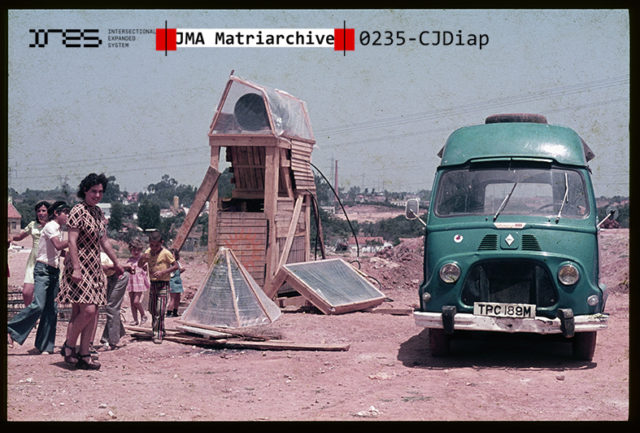
Photos of the solar panel by Josefina Mena, Liberdade, Portugal. Record 235-CJDiap JMA Matriarchive.The prototype of this original hot shower system using solar energy was designed in 1974 and built collectively by Bob Kindred, Graham Caine, Keith Cowling and Josefina Mena. Lynne Bailey, while taking care of two young children remained in charge of all the extensive domestic support needed in order to make this project achieve its goals.
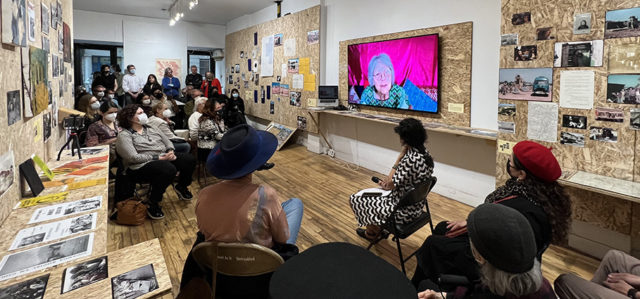
Curator Yohanna Roa in conversation with artists of the exhibition on opening night, May 11th. livestream is available here.
Angeles Donoso Macaya Lecture-opening click here
Yohanna M Roa, curator
This exhibition is the premiere worldwide activation of the Mexican-Lebanese pioneer ecofeminist architect Josefina Mena’s archive reconsidered within the contemporary paradigm of New York’s present-day artistic, cultural, environmental, and socio-political scene. It showcases her participation in various social, artistic and technological movements between 1967 and 1976 in Europe, Africa, and South America. Her life trajectory, architectural projects, art world links and political activism are framed in early intersectional, ecofeminist and decolonial practices.
Mena’s fifty years’ documentary collection includes material from Cecilia Vicuña (poet, artist), Cohen Wessing (War photographer), Gustav Metzger (developer of the Auto-Destructive Art concept), the ‘Radical Technology’ collective in England (alternative technologies), Maurice Wilkins (Nobel Prize for Physiology or Medicine, 1962), Social and Resistance movements such as the Carnation Revolution in Portugal, the MIR in Chile (Movement of the Revolutionary Left), among others. The exhibition also presents works by artists who activate the archive: Ivan Navarro and Courtney Smith, Mike Hoolboom, Jorge Lozano, Lilia Ziamou, Sa’dia Rehman, María Evelia Marmolejo, Roland Gebhardt, Fuentes Rojas (Red Fonts) / Tania Andrade Olea y Claudia Baez. To visualize the breadth of themes of the matriarchive, the following writers and curators participate: Semíramis González, Kate Aydin, Blanca de La Torre, Karen Cordero, Simonetta Moro, Lia Gil Antunes and Iair Rosenkranz.
Title: “Esa Soy yo” – “That’s me”. Jorge Lozano. Experimental filmmaker. Video 12 minutes, based on super 8 film material, taken by Josefina during the Carnation Revolution 1974
Josefina Mena declares that “Resistance is a daily-active way of living” all human acts are political, and our private micro-actions affect the social macrostructures. Whether for an architectural project, a design, a collective artistic work, or a scientific publication, Mena recognizes the intersection between social class, gender, context, the natural environment and the daily personal relationships that structure social arenas. Its objective is to initiate infrapolitical changes, which manage to alter the traditional power structures, giving autonomy and self-management to the so-called subaltern.

Images of the geometric figures used by professor Josefina Mena to create the design in dialogue with community members
Mena’s aesthetic interests are political, collective and feminist all at once. Due to these interests, to approach her production’s interdisciplinary, international and delocalized network, it was necessary to develop the concept of ‘Matriarchive,’ which allows exploring the documents from different perspectives. The JMA Matriarchive in resistance is a place that operates as an organic network, a matrix capable of producing multiple relationships and experiences, the past and the future altering each other. We have invited artists and academics to activate the archive, interpreting the documents from their personal stories and social-political contexts.
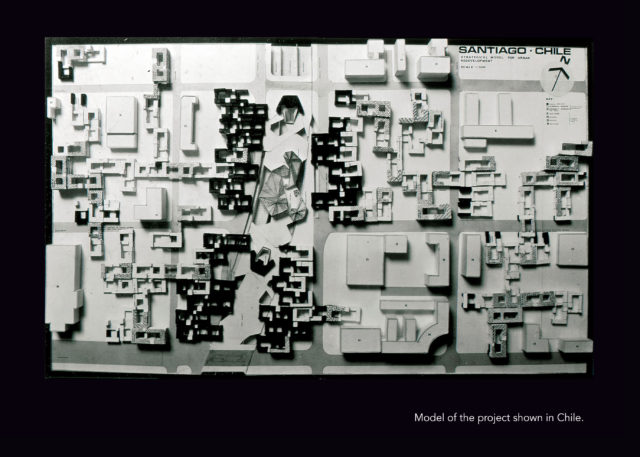
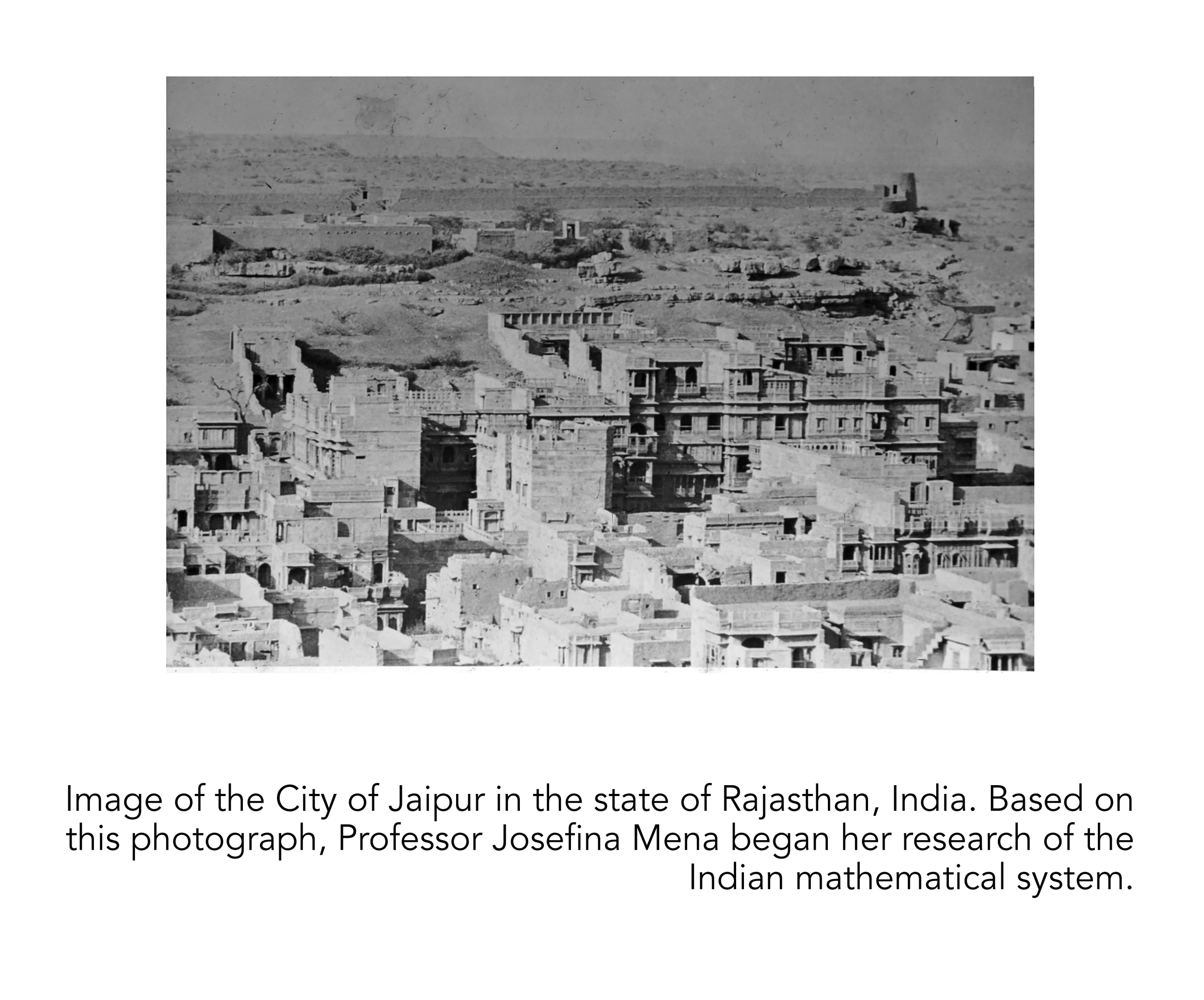
Three Traces and Community Engagement
Out of the exhibition of Professor Mena’s archive at WBX, the project plans to leave explicit, permanent traces in New York City as an active and ongoing archive-testimony fully committed to ‘community’, all the while establishing a durable relationship between architecture, community, feminism, as spelled out by the archive as follows:
#1) Academic Trace.
Professor Mena developed various projects that established a ‘community-architecture’ relationship, her objective being that communities must be self-managed. A group of select, local academic experts in community architecture and intersectional feminism will be working at WBX with a given assortment of documents from the archive which describe, ‘sui generis’, projects carried out by Dr. Mena within various, different communities. The proposed work implements oral history as a working tool and method, engendering readings of the archive to be re-generated thus allowing for the establishing of new relational, symbiotic links with New York City communities. All this rich, abundant, regenerated trace material will be made permanently available to the NYC general public, Academia, art, social and community centers in Upper and Lower Manhattan through WBX’s own website as well as via existing online platforms, eg, YouTube, Facebook, Instagram, Twitter, Zoom…alongside other digitally collaborative methods.
Activation Letters
In 1975 Josefina Mena received a letter from her friend Keith addressing the difficulty of presenting and getting acceptance in the London scientific context of a resolved research project about alternative technologies, successfully developed under the tutelage of the then new—post dictatorship— Portuguese socialist government following the Carnation Revolution. Yohanna reactivates Mena’s archive by inviting various academics and creatives to read the original letter and respond, taking into account their own personal life context and expressing their point of view.
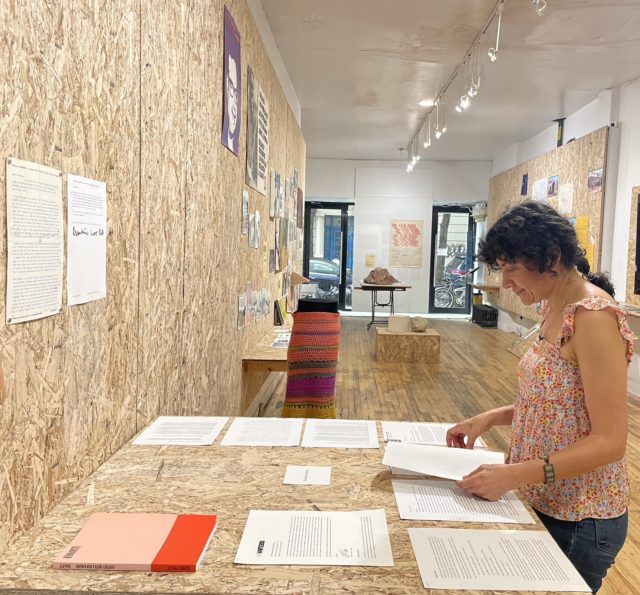
Original Letter, by curator Yohanna M Roa
Artist Activations
Jorge Lozano
Title: That’s me (Esa Soy Yo)
Video 12′
The artist is interested in pointing out the information omitted, ignored, or forgotten in the archives. Beyond the fidelity of the content of the documents, the artist sees in the archives a way to establish new connections and relations that allow pointing out empty spaces and carelessness. He spontaneously encountered Josefina’s films about the Carnation Revolution, celebrating her vision and commitment to this timely Revolt. Lozano understands the 1974 revolution as a by-product of the conflict – contradiction caused by the Portuguese colonial war in African countries. For him, occupations, military interventions, and war are always crimes against humanity, crimes against all life
Koen Wessing Photos, Josefina’s posters and designs
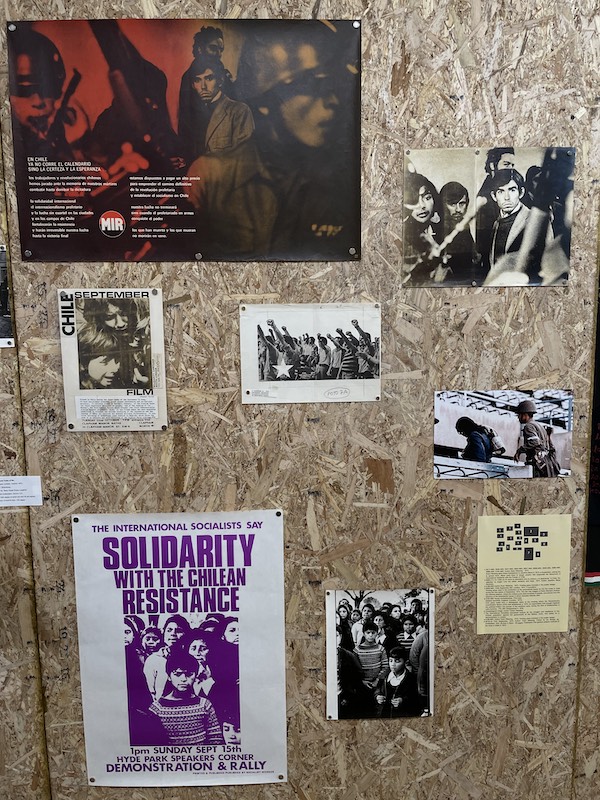
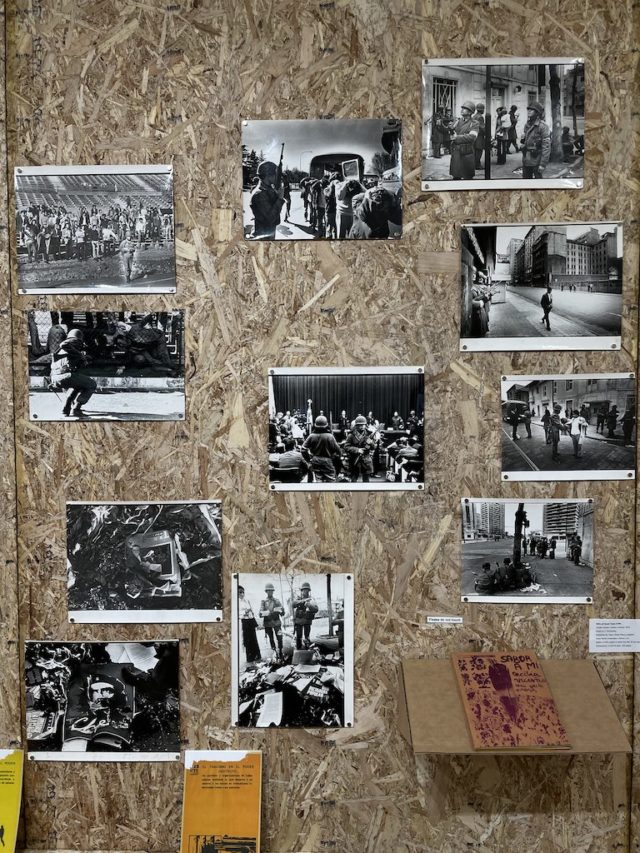
Koen Wessing is an important figure on the timeline of Josefina’s career; their relationship yielded some of Josefina’s most riveting protest publications, specifically those which discussed the Chilean Revolution. After meeting in Chile during Allende’s rise to power, Koen and Josefina bonded over a shared interest in the socialist process. Although Josefina would depart from Chile on the eve of general Pinochet’s September 11, 1973 coup d’etat, Koen would remain in the country to photograph the swelling chaos. He was one of very few photographers able to document the Chilean coup, making his photos especially rare.
When the pair reunited in Amsterdam later that year, a depressed Wessing would give a number of original photos from the conflict to Josefina. She used the photos to develop posters that highlighted the Chilean struggle and the socialist commitment to freedom, and which were distributed internationally to spread the message.
Despite his depressive episode, Wessing continued to live and work as a photographer. In 1978, he found himself back in Latin America amidst the upheaval of the Sandinista socialist revolution in Nicaragua. His eye never faltered, and the images from this era capture in full force the intense ferocity of the war.
Claudia Doring Baez
Title: Parents Discovering Their Dead Son, 2022, Oil on canvas; dim: 14h x 11w in
Title: Nicaragua, Koen Wessing, 1979, 2022. Oil on canvas; dim: 18h x 24w in
Title: Koen Wessing. Nicaragua. 1978 (white pages)
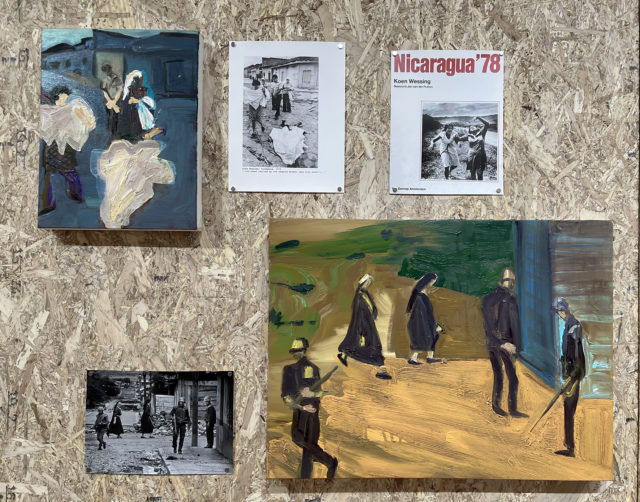
Essayist Roland Barthes would discover and showcase some of Koen’s Nicaragua photos in his writing, which caught the eye of painter Claudia Baez. Taken aback by the power of the photographs, Baez used Barthes words and Koen’s shots to re-imagine the scenes, activating them through her own eyes, in a world of color and motion. Barthes commented on the significant impact of Wessing’s photos due to the brutality and frankness the images conveyed. Claudia is married to a Nicaraguan has been there countless times, and has walked and shared those same streets with the locals. Seeing the photos of Wessing, Baez shuddered, she felt in her body the memories evoked by the photographs, no doubt because for her Nicaragua is a living, a material place full of nature, mountains and deeply felt experiences. Inspired by Roland Barthes’ essays on photography, the artist explores structuralist theories and applies them to paint. Baez locates the exact photographs Barthes cites in his writing and interprets those images using his text to focus her attention on specific aspects of each painting. This process frees Baez to work expressively, helping her come in contact with subjects and stories that enrich her practice. Unbeknownst to her, she had embarked on a similar path as Josefina did 50 years earlier, thus contributing to the vastness of the Matriarchive.
Josefina Mena’s work as an architect saw her take on groundbreaking experimental projects as she sought to press forward and further the socialist and ecofeminist causes. In the Spring of 1973, as Salvador Allende was beginning to build Chile up through a renewed socialist lens, he organized a competition; the subject of the competition was defined as “pilot for a project for urban redevelopment in the center of Santiago”. Architects were tasked with creating designs for potential construction projects in the Chilean capital. Allende believed that it was time for a “period of structural changes that [would] force the basis of the future socialist society”.
Although Josefina did not win the competition, she earned a special mention. Her idea to create an all-inclusive, living-working-learning community ran against the Western norm of capitalistic society, which segregated areas of life in rigid, controlled fashion. Josefina believed that Latin American society could not be organized within the Western mold, and needed to be re-thought within the context of class consciousness and social divides. “All Power to the people, for the people”, was a key point of her proposal.
–
Sa’adia Rehman
Title: Blue, 2022
ink, graphite, silver leaf, blue and black carbon paper, rice paper, vellum, Arches and T-pins
dimensions variable
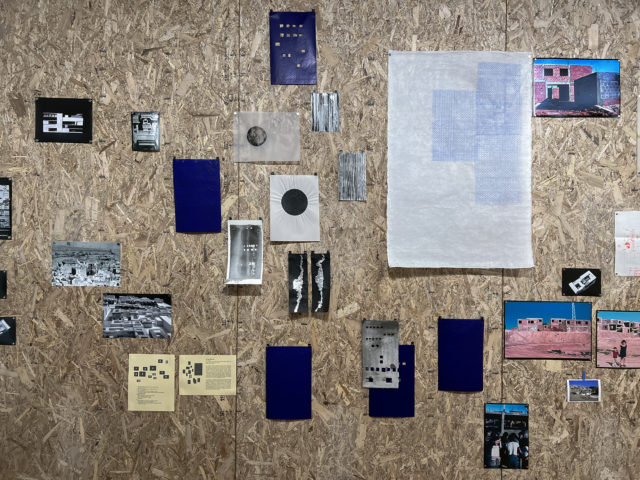
Sa’dia Rehman’s contribution to the Matriarchive offers an integral perspective which showcases the intergenerational effects of Josefina’s contributions to the world of ecofeminism and the progressive spirit at large. Using Mena’s architectural ventures as inspiration, Sa’dia created a number of works which combine her own life experiences and contemporary political climate with the ideas and philosophies put forth by Josefina years ago. When making the pieces, Rehman emphasized processes of reconstruction, “thinking of ways to take from all the cut out or the tracings or the wreckage around us and build new things.”
Lilia Ziamou
Title: Noir Hour, 2018
aqua-resin, plaster, thermoplastics, fabrics, burnt digital prints on fabric, wax, pigments, metal, screws. 28 x 51 x 11 inches
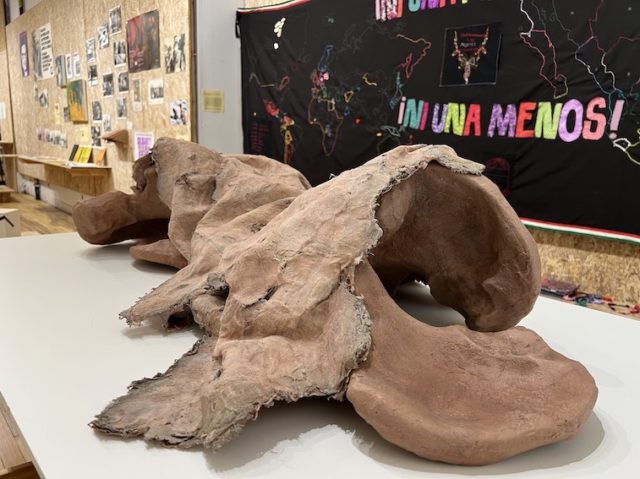
–
Fuentes Rojas (Red Fonts)
Title: Collective Days of Embroidery
cartography, black fabric and colors thread
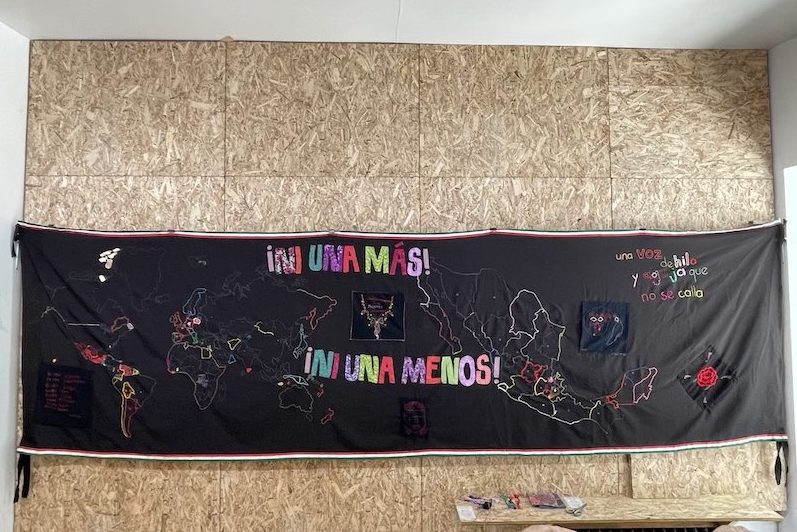
–
Ivan Navarro
Title: Protesta en la plaza, Circa 1974
Title: Revolutionary dynamics of Women’s Liberation by Sabrina Roberts
print; 21.5cm x 30cm. – 37 pages
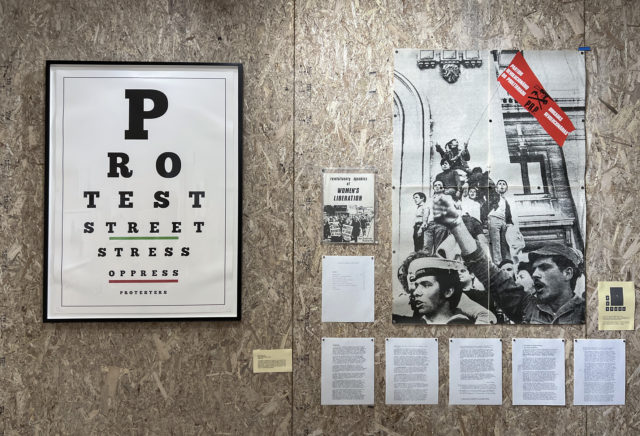
Josefina Mena occupied a space in the progressive movement which was unique for the time; her intersection of feminist and socialist agendas was radical and exposed the long-conditioned conflict which existed between them. In the early 20th century, the socialist and communist movements which sprouted up in places like the USSR were carried out in blatant ignorance of the societal struggles of Women. It became clear to certain progressive thinkers like Leon Trotsky and Alexandra Kollantai that the feminist and socialist causes were actually fundamentally intertwined, and that it was the same bureaucratic system that was oppressing women for their sex, people of color for their race, and the working class for its labor. Despite the efforts of these early Marxist-influenced figures, the mainstream socialist agenda continued to uphold the traditional hierarchical sex structure and family unit which saw women subjugated into domestic servitude.
By the 1970s, the feminist battle had gripped society in full swing, running parallel to the socialist revolutions in places like Portugal and Chile. In the fashion of the aforementioned philosophies, Josefina’s staunch feminist values did not impede her dedication or support of the furthering of socialist causes; rather, she sought to highlight the intersection between the two, undertaking projects which intended to re-design the idea of class structure and the traditional, capitalistic pattern of life, while also uplifting the role of women and imagining a society based on equality between sexes. Josefina worked with a desire for intersectional, universal abolition of oppression. As outlined in a League for Socialist Action (LSA) pamphlet from 1975, author Sabina Roberts argues that no true socialist revolution can be achieved without the participation of women and that the liberation of women and the working class are forever bound to each other. The position of this wall at the end of the exhibition in the WhiteBox space acts as a rounding-off point for viewers. The pieces situated here — specifically Ivan Navarro’s Carta Visual — work together to bring a contemporary voice to the Matriarchive, and conclude the exhibition by posing the ambiguous question of “What is a revolutionary?”.
Skirt made in Crochet. Mapuche designs. Presented by Cecilia Vicuña to Josefina Mena. 1972-1973. London
–
Roland Gebhardt
Title: Federating Icons, 2012
Digital print on Hahnemuhle Photo Rag Sheets
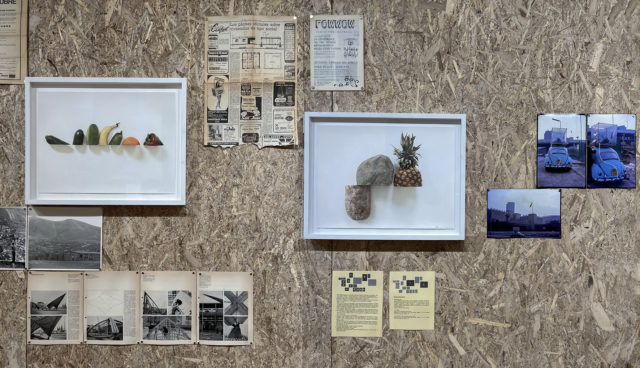
–
Mike Hoolboom
Title: Chile 1973
Video 8′ 14
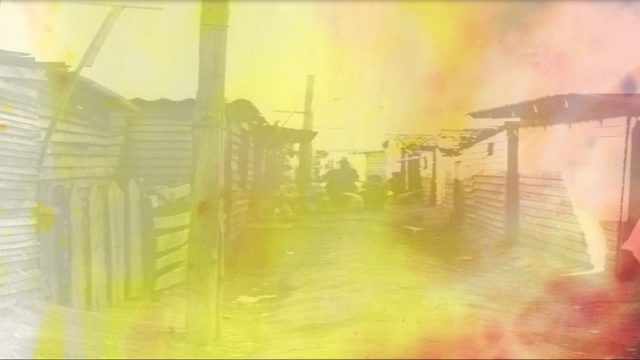
#3.) Archive – Community Trace
A live workshop on community archives will be publicly offered in-situ and online via ZOOM + FB, to be focused on working with the Puerto Rican and Latinx communities at large, principally in the axis L.E.S.-East Harlem-Bronx. Participants will engage in a process through which they will be able to organize their memories and documents. The ample, succinct results of this master workshop will in turn create a new archive that will account for and become the repository of the memories—unique testament—of representative members of said communities. It will be published digitally, free of charge, permanently on the WBX site and the world wide web. A publication and ‘print on demand’ will be available. In this manner, the possibility remains open for the workshop to be repeated ad-infinitum, encouraging the new, subsequent archive to remain active, continue growing and being nurtured with the aim of gradually recognizing and recreating the trajectories and distinct memories of the existing Puerto Rican and Latinx variegated communities including its constant arrivals settling in in New York City.
